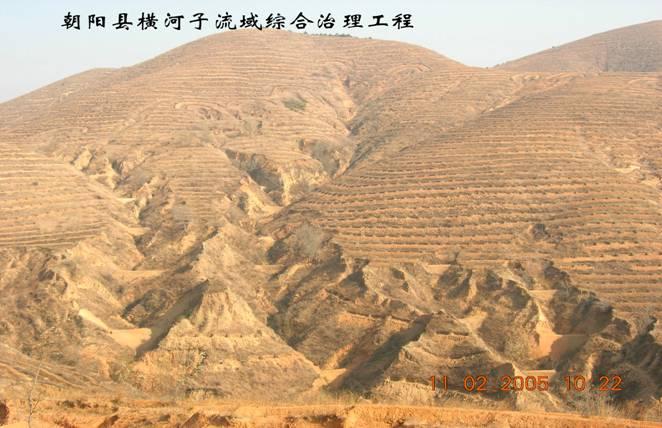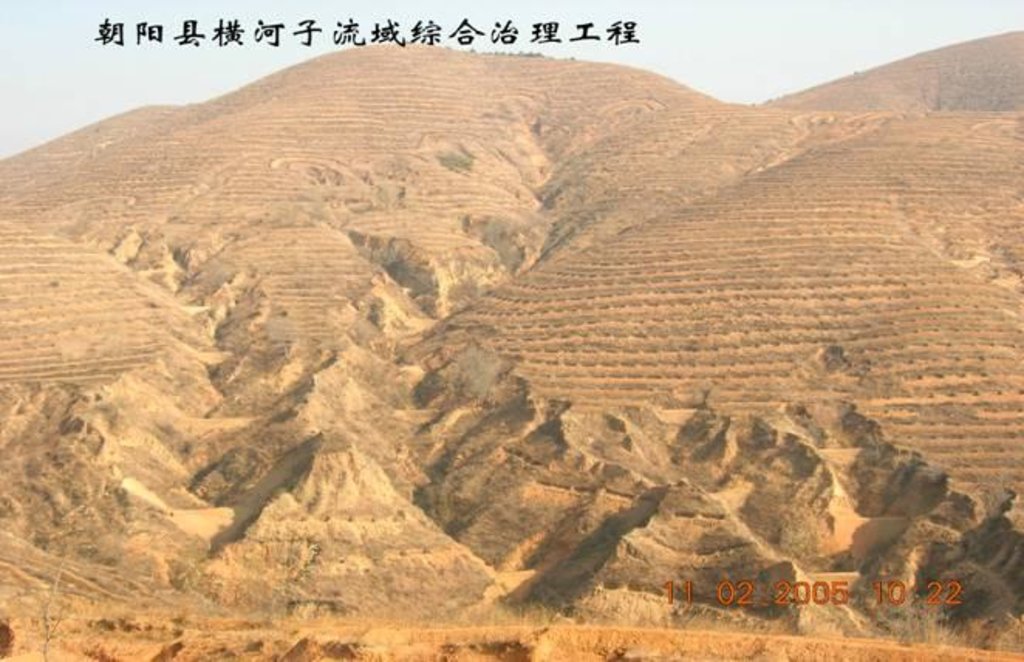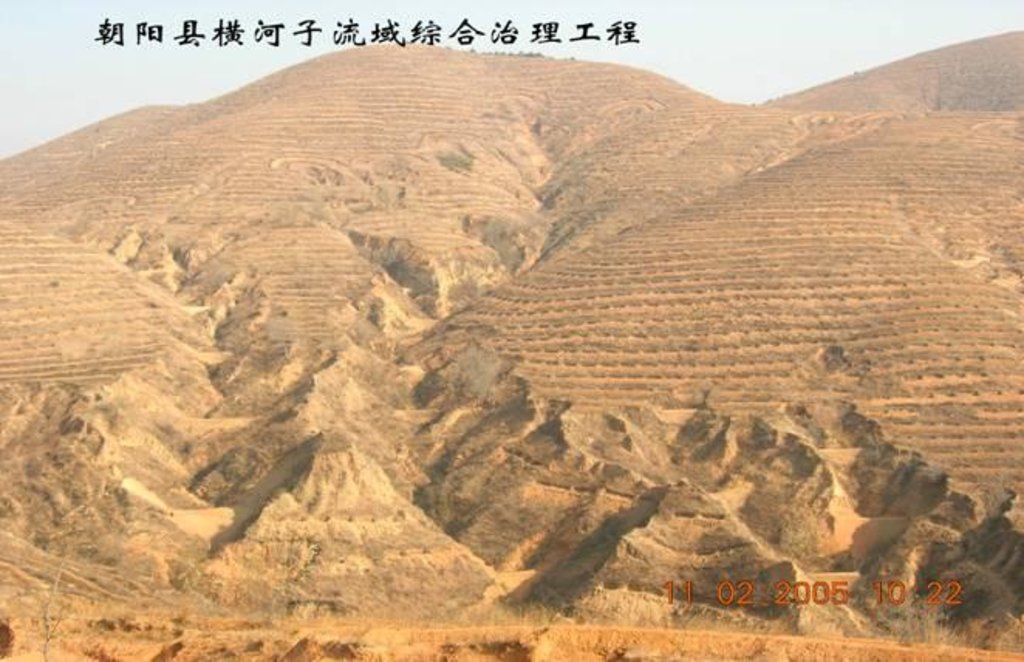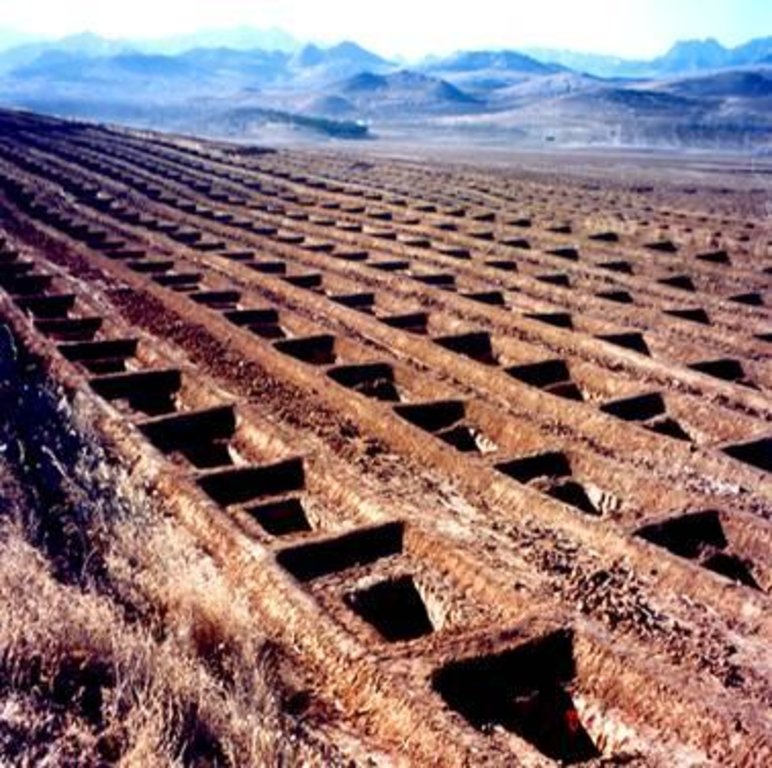Slopeland Control by Mechanical measures [China]
- Creation:
- Update:
- Compiler: Unknown User
- Editor: –
- Reviewer: Laura Ebneter
approaches_2434 - China
View sections
Expand all Collapse all1. General information
1.2 Contact details of resource persons and institutions involved in the assessment and documentation of the Approach
SLM specialist:
Wang Yongjun
arllen123@163.com
School of Soil and Water Conservation, Beijing Forestry University
China
Name of the institution(s) which facilitated the documentation/ evaluation of the Approach (if relevant)
Beijing Forestry University (BFU) - ChinaName of the institution(s) which facilitated the documentation/ evaluation of the Approach (if relevant)
CDE Centre for Development and Environment (CDE Centre for Development and Environment) - Switzerland1.3 Conditions regarding the use of data documented through WOCAT
The compiler and key resource person(s) accept the conditions regarding the use of data documented through WOCAT:
Yes
2. Description of the SLM Approach
2.3 Photos of the Approach
2.5 Country/ region/ locations where the Approach has been applied
Country:
China
Region/ State/ Province:
Liaoning Province
Further specification of location:
Chaoyang county
2.8 Main aims/ objectives of the Approach
The aim of the approach are to: - Establish the control model of government and farmers; - Intercepting and restoring soil and water to prevent soil and water loss; - Publicizing the knowledge of soil and water conservation and the idea of sustainable development; - Protecting , improving and using soil resources rationally combining with biological measures; - Improving the productive and ecological environment, increasing yield and farmers income.
The SLM Approach addressed the following problems: - Severe soil and water loss, ecological environment deterioration; - Soil physical property deterioration: rigidity and hardening in drought period; heavy and clay in flooding period; water and fertilizer conservation capability decreased.
2.9 Conditions enabling or hindering implementation of the Technology/ Technologies applied under the Approach
social/ cultural/ religious norms and values
- hindering
Social factors: Lack of soil and water conservation knowledge and understanding of water intercepting and drainage ditch; emphasis on using and ignoring management
Treatment through the SLM Approach: Strengthen publicizing at local level, pay attention to guidance and training
availability/ access to financial resources and services
- hindering
Shortage of capital: National investment is not enough; local investment is difficult to ensure; farmers investment is limited
Treatment through the SLM Approach: Establishing multi-level, diversification and multiple channels of the investment system of national investment, local support and labor input by farmers and using foreign and social investment.
knowledge about SLM, access to technical support
- hindering
Requiring high level technique: Professionals should participate during construction period.
Treatment through the SLM Approach: Designing and construction are made by the units with qualification, training management personnel.
other
- hindering
Natural factors: Complicated landform, inconvenient transportation
Treatment through the SLM Approach: Pay attention to the corresponding engineering project such as temporary road
3. Participation and roles of stakeholders involved
3.1 Stakeholders involved in the Approach and their roles
- local land users/ local communities
- SLM specialists/ agricultural advisers
- national government (planners, decision-makers)
3.2 Involvement of local land users/ local communities in the different phases of the Approach
| Involvement of local land users/ local communities | Specify who was involved and describe activities | |
|---|---|---|
| initiation/ motivation | none | Technique extension |
| planning | interactive | Farmers participate design process |
| implementation | interactive | Farmers input labor |
| monitoring/ evaluation | interactive | Farmers participate investigation of benefit evaluation |
| Research | none |
3.4 Decision-making on the selection of SLM Technology/ Technologies
Were decisions on the selection of the Technology(ies) made:
- Song-Liao Water Resources Commission, Ministry of
Explain:
Song-Liao Water Resources Commission; Soil and water conservation office of Water Conservancy Bureau, Liaoning Province
4. Technical support, capacity building, and knowledge management
4.1 Capacity building/ training
Was training provided to land users/ other stakeholders?
Yes
Specify who was trained:
- land users
Form of training:
- farmer-to-farmer
- courses
4.4 Monitoring and evaluation
Is monitoring and evaluation part of the Approach?
Yes
Comments:
management of Approach aspects were monitored through measurements
land users involved aspects were monitored through measurements
area treated aspects were monitored through measurements
economic / production aspects were monitored through measurements
socio-cultural aspects were monitored through measurements
technical aspects were monitored through observations
bio-physical aspects were monitored through measurements
There were many changes in the Approach as a result of monitoring and evaluation: Formerly the government policy guides farmers to participate, investment is not enough and the enthusiasm of farmers is low, and treatment result is not obvious. Presently, government investment plus technique service support and favorable policy promote construction; Farmers enthusiasm is high, treatment result is obvious.
There were several changes in the Technology as a result of monitoring and evaluation: The project shortens slope length and route of surface runoff to reduce the erosion; Not only improve the effective utilization of rainoff sources, but also promote agricultural production condition and farmers income.
4.5 Research
Was research part of the Approach?
Yes
Specify topics:
- technology
Give further details and indicate who did the research:
The research institute, university and relational technique units are as the main research part. Part of scientific data is obtained by farmers. Research fields include the benefits of soil and water conservation caused by contour trench and water intercepting ditch, the influence on water-fertilize condition and increasing yield. The research results are directly used to revise and perfect the project.
5. Financing and external material support
5.1 Annual budget for the SLM component of the Approach
Comments (e.g. main sources of funding/ major donors):
Approach costs were met by the following donors: government (National investment): 60.0%; local government (district, county, municipality, village etc) (Local financing): 30.0%; local community / land user(s) (Labor input by farmers): 10.0%
5.2 Financial/ material support provided to land users
Did land users receive financial/ material support for implementing the Technology/ Technologies?
Yes
If yes, specify type(s) of support, conditions, and provider(s):
Raw materials: cements, stone and sand; many kinds of conveyances; Scientific input is mainly the planning and design of specific personnel.
5.3 Subsidies for specific inputs (including labour)
If labour by land users was a substantial input, was it:
- rewarded with other material support
Comments:
Minority of farmers willing to input labor. Most of the farmers are encouraged to participate by deductions and exemptions agricultural tax and provide work as a form of relief. The participated farmers agricultural tax deduced and exempted by 30-50% in 5 years. Farmers cultivated land was compensated on 300yuan/mu•a. At the same time, the participated farmers could get interest-free or low interest Loan of Aid-the-poor which is primarily used on production.
5.4 Credit
Was credit provided under the Approach for SLM activities?
Yes
Specify conditions (interest rate, payback, etc.):
repayment conditions: National investment, NA .
6. Impact analysis and concluding statements
6.1 Impacts of the Approach
Did other land users / projects adopt the Approach?
- No
- Yes, little
- Yes, moderately
- Yes, greatly
An important method to develop soil and water loss prevention, improve utilization rate of rainoff sources and promote income in the similar area. Accepted generally by other land users.
6.4 Strengths/ advantages of the Approach
| Strengths/ advantages/ opportunities in the compiler’s or other key resource person’s view |
|---|
| Government provides funds and techniques, communities participation (How to sustain/ enhance this strength: Establish multi-mechanism investment forms diversification, strengthen farmers extension) |
| Combining method, research and demonstration (How to sustain/ enhance this strength: Strength scientific research, play the role of demonstration ) |
| Combining agricultural and forestry measures (How to sustain/ enhance this strength: Developing greatly runoff agriculture and forestry and high efficiency agriculture) |
| Shortening slope length and route of surface runoff (How to sustain/ enhance this strength: Increase vegeta-tion coverage) |
| Reducing erosion and sediment rushing into river (How to sustain/ enhance this strength: ArrangingGully Head Protection Project) |
| Improving the effective utilization of rainoff sources (How to sustain/ enhance this strength: Anti-scour Shrub Belt) |
| Increasing grain yield and farmers income (How to sustain/ enhance this strength: Planting economic crops on the slope, further perfect irrigation situation) |
6.5 Weaknesses/ disadvantages of the Approach and ways of overcoming them
| Weaknesses/ disadvantages/ risks in the compiler’s or other key resource person’s view | How can they be overcome? |
|---|---|
| Establishing multi-level, diversification and multiple channels of the investment system of national investment, local support and labor input | By farmers and using foreign and social investment. |
| After the two labours cancelled, the enthusiasm of farmers decreased | Government should link up with actual situation, make favorable policy to encourage farmers participating soil and water conservation construction. |
| Extending from up to down by government, community participate passively, farmers understanding is limited | Establish diversified popularization and extension, increase the frequency of consultation and training. |
7. References and links
7.1 Methods/ sources of information
- field visits, field surveys
- interviews with land users
Links and modules
Expand all Collapse allLinks
No links
Modules
No modules





